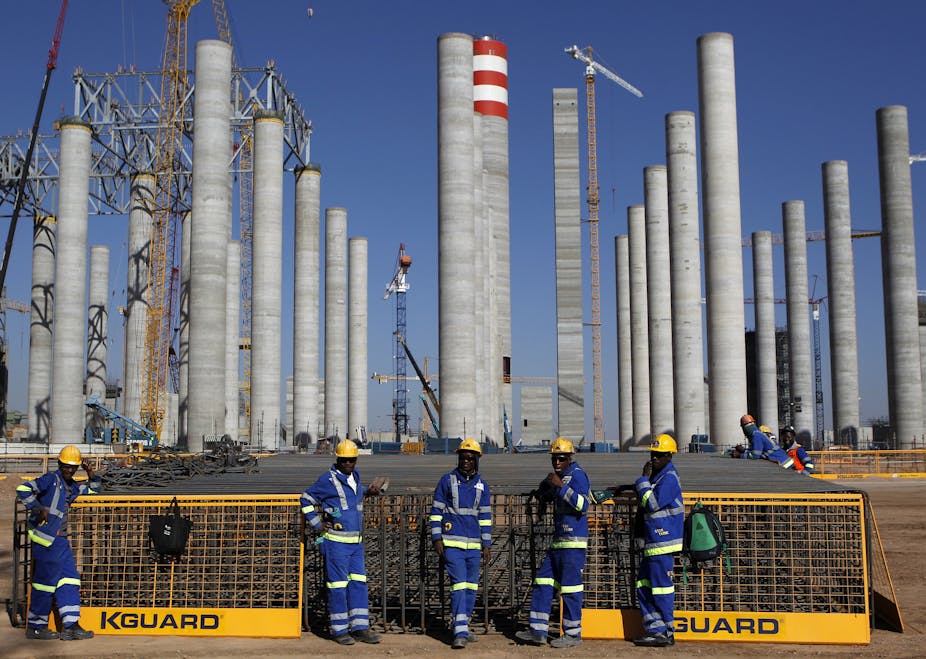After investigating the “massacre” (as termed by both the opposition Democratic Alliance and African National Congress Youth League) of more than 100 mental health patients under the guise of cutting costs, South Africa’s Health Ombudsman Malegapuru Makgoba advised that a “sufficient budget should be allocated for the implementation” of proper care.
Last year’s national budget imposed real cuts of 5.4% to the health budget and 13% to provincial hospitals – assuming the healthcare inflation rate, according to the Medical Aid schemes, was 11%.
The battle between Finance Minister Pravin Gordhan’s fiscal prudence and the forces bent on fiscal patronage in the country can be won.
But this can only happen if there’s a rethink of the budget. That would mean rejecting the demand by credit ratings agencies like Standard & Poor’s for “fiscal improvement” through lower budget deficits – down to a targeted 2.4% of GDP next year. In simple terms this means lower state spending.
South Africa has been down this road before. Threatened with a potential downgrade to junk status last year, Gordhan cut the 2016 size of inflation-adjusted social grants and state budgets for housing, municipal services (even before elections) and water (amid a drought).
Poor South Africans are facing increasing cost pressures. The official January 2016-17 inflation rate was 6.8% but a standard food basket for low-income families rose 16.5%. This is far higher than last year’s average 7.8% rise in the monthly child support grant to R350 and the measly 3.5% rise in the foster care grant to R890 per month.
A higher road of fair taxation
To do something about these paltry increases, one option the finance minister has is to raise more revenue. But who should pay higher taxes – poor people or rich people and big corporations?
One option is to raise the rate of Value Added Tax (VAT). But this would hit poor people the hardest because it’s a higher share of their income than it is for the non-poor. Leading lawyers and tax consultants are lobbying for Gordhan to raise VAT by at least 1 percentage point.
In fact rich people should bear a higher burden of taxes, because the “1%” ultra-wealthy have done extremely well since 1994. Their share of national income was, thanks to apartheid, an impressive 12% in 1994 but by 2008 this had risen to 20%, the highest in a 2016 World Bank database.
And in many ways, the state keeps donating to the wealthiest citizens. Last year each time a passenger boarded a South African Airways (SAA) flight taxpayers donated R600 towards their ticket. That’s because the state provided SAA with a R5.6 billion subsidy while the airline carried nine million passengers.
When a passenger boarded the Gautrain – the fast speed service between Johannesburg, Pretoria and the OR Tambo airport – there was another R90 gift – a R1.5 billion subsidy covering 17 million trips.
In contrast, operating subsidies were less than R5 per trip for the 2.4 million working-class and poor commuters who use Metrorail every day.
The case for higher corporate taxes
And big corporates should contribute more towards the country’s tax revenue. In an economy that produced R4.4 trillion worth of Gross Domestic Product (GDP) last year, business taxes accounted for a paltry R200 billion: just 4.5% of GDP, down from 7% a decade ago and 9% in 2008.
All along, Treasury has lowered corporate taxes: from 56% of distributed profits in 1994 to 43% in 1997 to 39% in 2000 to 35% in 2009 and then down to 28% by 2013. Restoring corporate taxes back to 7% of GDP would raise R110 billion (five times more than the proposed 1 percentage point rise in VAT).
By comparison, the #FeesMustFall-to-zero demand would cost R30 billion annually, about six times more than Gordhan added to last year’s budget after national protests.
Can local firms afford higher taxes? A typical rebuttal is that the current 28% rate (before loopholes) is higher than the world average, and that those rates have dropped substantially the last two decades. But among peer emerging market economies the profitability of South African firms has usually been second or third highest. According to last July’s International Monetary Fund review local corporations claimed a 23% return on equity in 2015 – a year of the worst mining sector collapse in history.
An end to white elephants
Then there are Treasury guarantees worth R683 billion that undergird borrowing by the country’s state-owned enterprise. These include the power utility Eskom’s R350 billion exposure for the long-delayed Medupi and Kusile power plants which incorporate dubious coal-supply contracts. Other state owned enterprises given guarantees include the road agency Sanral, South African Airways and Transnet, the state’s rail, port and pipeline company.
Transnet’s self-destructive expansion is based on the mining industry’s R803 billion investment strategy to export “coal (18 billion tons), chromite (5,5 tons), platinum (6,3 tons) and palladium (3,6 tons)” through Richards Bay, the large industrial port on the country’s east coast. These plans were made before the price of coal crashed and with no regard to climate change.
Another white elephant is the R250 billion expansion of the coastal city Durban’s port-petrochemical complex. The project is a planner’s fantasy. The white elephant list also includes the wasteful R6.4 billion 2022 Commonwealth Games.
In the battle between the forces of fiscal patronage and fiscal prudence, the fiscal prudence brigade has been extremist in imposing austerity – except when it comes to dubious mega-projects favoured by the patronage network. In the most unequal country in the world, the budget offers an opportunity to move away from both the extremes and instead embrace the majority of the society, and environmental sanity.

